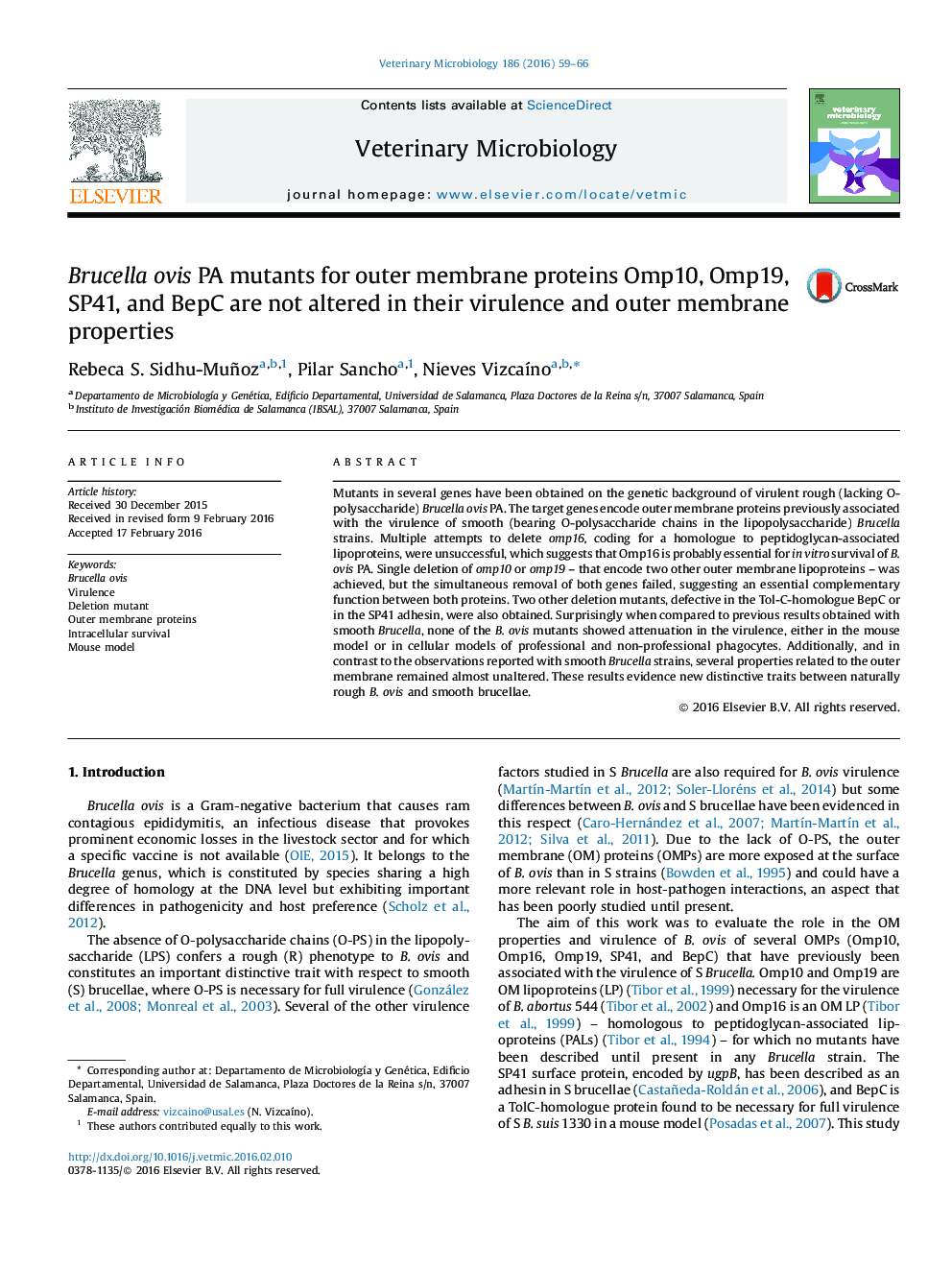| Article ID | Journal | Published Year | Pages | File Type |
|---|---|---|---|---|
| 5799699 | Veterinary Microbiology | 2016 | 8 Pages |
â¢B. ovis mutants lacking Omp10, Omp19, BepC or SP41 (ugpB product) OMPs were obtained.â¢Multiple attempts to obtain single Îomp16 or double Îomp10-Îomp19 mutants failed.â¢Îomp10, Îomp19, ÎbepC and ÎugpB mutants were not attenuated in the mouse model.â¢They were not attenuated in lines of professional and non-professional phagocytes.â¢Relevant differences between B. ovis and smooth Brucella are evidenced.
Mutants in several genes have been obtained on the genetic background of virulent rough (lacking O-polysaccharide) Brucella ovis PA. The target genes encode outer membrane proteins previously associated with the virulence of smooth (bearing O-polysaccharide chains in the lipopolysaccharide) Brucella strains. Multiple attempts to delete omp16, coding for a homologue to peptidoglycan-associated lipoproteins, were unsuccessful, which suggests that Omp16 is probably essential for in vitro survival of B. ovis PA. Single deletion of omp10 or omp19 - that encode two other outer membrane lipoproteins - was achieved, but the simultaneous removal of both genes failed, suggesting an essential complementary function between both proteins. Two other deletion mutants, defective in the Tol-C-homologue BepC or in the SP41 adhesin, were also obtained. Surprisingly when compared to previous results obtained with smooth Brucella, none of the B. ovis mutants showed attenuation in the virulence, either in the mouse model or in cellular models of professional and non-professional phagocytes. Additionally, and in contrast to the observations reported with smooth Brucella strains, several properties related to the outer membrane remained almost unaltered. These results evidence new distinctive traits between naturally rough B. ovis and smooth brucellae.
